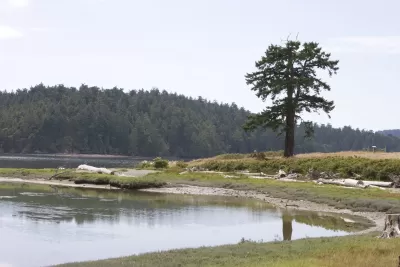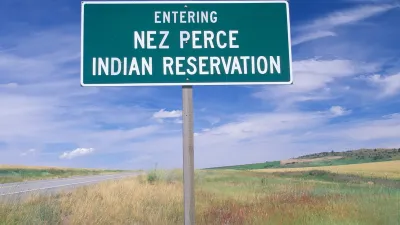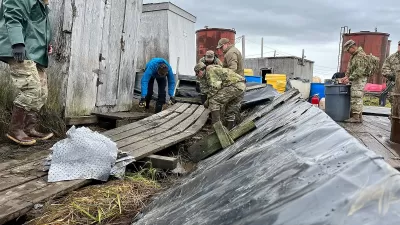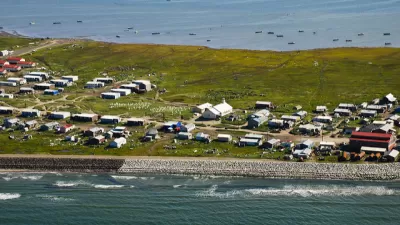Tribal communities are preparing for climate impacts by drawing on their deep understanding of the relationship between humans and the natural environment.

Indigenous communities across the country are leading the way in addressing climate change, which is directly affecting tribal lands, reports Nicola Jones. The tribes’ connections to natural resources and understanding of ecosystems have been integral in the development of forward-thinking practices and policies to protect the environment.
"These are communities that have relied on the land for generations, building an intimate knowledge of the natural cycles of plants, animals, and weather. Unlike the traditional Western worldview that humanity can and should seek dominion over the environment, indigenous populations tend to view humanity as part of an interconnected whole," writes Jones.
The Swinomish in Washington state, for example, have launched projects to protect salmon runs and restore oyster beds. "For the Swinomish, as for many indigenous groups, it makes little sense to talk about environmental health and human health separately; they are deeply intertwined, with community cohesion and traditional food security being equally vital," says Jones.
FULL STORY: How Native Tribes Are Taking the Lead on Planning for Climate Change

Alabama: Trump Terminates Settlements for Black Communities Harmed By Raw Sewage
Trump deemed the landmark civil rights agreement “illegal DEI and environmental justice policy.”

Study: Maui’s Plan to Convert Vacation Rentals to Long-Term Housing Could Cause Nearly $1 Billion Economic Loss
The plan would reduce visitor accommodation by 25% resulting in 1,900 jobs lost.

Why Should We Subsidize Public Transportation?
Many public transit agencies face financial stress due to rising costs, declining fare revenue, and declining subsidies. Transit advocates must provide a strong business case for increasing public transit funding.

Paris Bike Boom Leads to Steep Drop in Air Pollution
The French city’s air quality has improved dramatically in the past 20 years, coinciding with a growth in cycling.

Why Housing Costs More to Build in California Than in Texas
Hard costs like labor and materials combined with ‘soft’ costs such as permitting make building in the San Francisco Bay Area almost three times as costly as in Texas cities.

San Diego County Sees a Rise in Urban Coyotes
San Diego County experiences a rise in urban coyotes, as sightings become prevalent throughout its urban neighbourhoods and surrounding areas.
Urban Design for Planners 1: Software Tools
This six-course series explores essential urban design concepts using open source software and equips planners with the tools they need to participate fully in the urban design process.
Planning for Universal Design
Learn the tools for implementing Universal Design in planning regulations.
Smith Gee Studio
Alamo Area Metropolitan Planning Organization
City of Santa Clarita
Institute for Housing and Urban Development Studies (IHS)
City of Grandview
Harvard GSD Executive Education
Toledo-Lucas County Plan Commissions
Salt Lake City
NYU Wagner Graduate School of Public Service





























